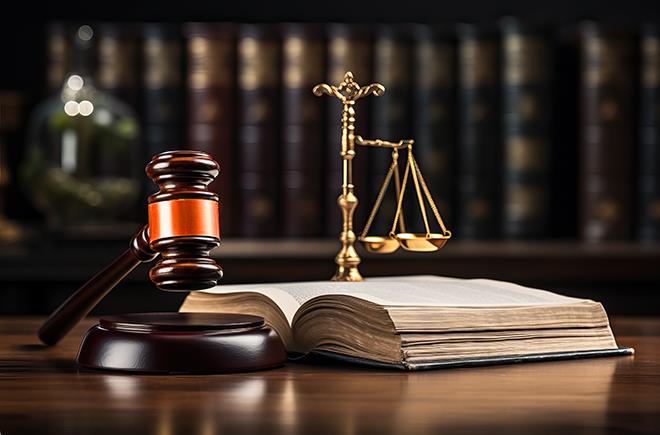Personal Injury and Corporate Responsibility for Customer Safety: Lessons From Garcia v. Starbucks
Understanding What Motivates a Jury to Punish, Handling Damaging Video Evidence, Importance of Non-Monetary Settlement Terms

Course Details
- smart_display Format
Live Online with Live Q&A
- signal_cellular_alt Difficulty Level
Intermediate
- work Practice Area
Personal Injury and Med Mal
- event Date
Tuesday, June 17, 2025
- schedule Time
1:00 p.m. ET./10:00 a.m. PT
- timer Program Length
90 minutes
-
This 90-minute webinar is eligible in most states for 1.5 CLE credits.
This CLE webinar will review the outcome in Garcia v. Starbucks Corp. (Cal. Super. Ct., Mar. 14, 2025), and offer insights about why the jury returned a $50 million damages verdict in only 40 minutes. Although the injuries were severe and the plaintiff requested almost three times the verdict amount, the types of events at issue in the case were not complex nor did they suggest intentional misconduct. Yet, both plaintiff and defense bars seem to agree that the jury probably intended to punish the defendant. The panel will evaluate what is known about the quality of the evidence, the positions and attitudes articulated by the parties at trial, and the impact of plaintiff and defense trial strategies. The program will also address the importance of non-monetary settlement terms and best practices for dealing with them.
Faculty

After years of working as a defense attorney for insurance companies and corporations, Mr. Benton gained invaluable insight into how these entities evaluate and defend personal injury cases. Since establishing the firm, he has recovered over $58,000,000 in 2024 alone, including notable settlements of $4,400,000 and $3,870,000.
Description
Both plaintiffs and defendants can learn from analyzing the amount and speed of the Garcia verdict, without overlooking the amount of the plaintiff's demand ($125 million) and the defendant's last settlement offer ($30 million). The facts of the case were simple. In 2020, according to the jury, a barista working the drive-thru window at Starbucks negligently failed to properly secure a hot drink in a drink carrier. The drink spilled into Mr. Garcia's lap causing third-degree burns and life-altering injury. Although the drink spilled only 1.4 seconds after it was handed to Mr. Garcia, Starbucks took the position that it was not responsible for anything that happened after the drink was transferred to the plaintiff. It also disputed the extent and amount of damages.
Importantly, the hand-off was captured on video, so the jury could see what happened. This highlights the importance of dealing adeptly with potentially damaging video. During trial, and well into the damages phase, settlement talks continued. Eventually Starbucks offered $30 million to settle, which suggests that it realized the potential for a verdict exceeding that amount. Although Mr. Garcia was willing to accept, Starbucks would not agree to his non-monetary terms which included an apology and a company-wide memo about double-checking the security of cups in drink carriers. Parties need a strategy for setting a value on these types of conditions so they can logically evaluate settlement.
On one hand, the amount of the verdict could seem shocking as it was almost double the amount of the last settlement offer; on the other hand, it was only about 40% of what the plaintiff was requesting, in most other contexts a "win" for the defense.
Listen as our experienced panel analyzes this notable case and offers insights for both plaintiff and defense counsel about why the jury might have decided as it did, how the parties can evaluate unique settlement demands, why the verdict strikes some as excessive, and other observations that will assist counsel in their next trial.
Outline
I. Overview the case
II. Lessons for defendants
III. Lessons for plaintiffs
Benefits
The panel will review these and other key issues:
- If the same damages had been caused by something more complex than hot tea, would the verdict amount have generated so much interest?
- What does the amount and speed of the verdict say about the jury's motivation?
- How does the integrity of the liability defenses impact damages?
- What unstated reasons might the defendant have had for being unable to meet the non-monetary settlement demands?
Unlimited access to premium CLE courses:
- Annual access
- Available live and on-demand
- Best for attorneys and legal professionals
Unlimited access to premium CPE courses.:
- Annual access
- Available live and on-demand
- Best for CPAs and tax professionals
Unlimited access to premium CLE, CPE, Professional Skills and Practice-Ready courses.:
- Annual access
- Available live and on-demand
- Best for legal, accounting, and tax professionals
Related Courses

Personal Injury and Corporate Responsibility for Customer Safety: Lessons From Garcia v. Starbucks
Monday, May 12, 2025
1:00 p.m. ET./10:00 a.m. PT

Witness Examination in Med Mal Cases: Leveraging Medical Records To Prove Breach of Standards, Causation, Damages
Tuesday, April 1, 2025
1:00 PM E.T.

Rideshare Arbitration Clauses: Navigating Passenger Rights and Compensation in Personal Injury Cases
Tuesday, April 29, 2025
1:00 p.m. ET./10:00 a.m. PT

Injuries From Amazon Delivery Service Partners: Developing the Record to Hold Amazon Liable for DSP Negligence
Monday, May 12, 2025
1:00 p.m. ET./10:00 a.m. PT
Recommended Resources
Making Continuing Education Work for You, Anytime, Anywhere
- Learning & Development
- Career Advancement
Getting the Most Out of BARBRI Resources
- Learning & Development
- Business & Professional Skills
- Talent Development